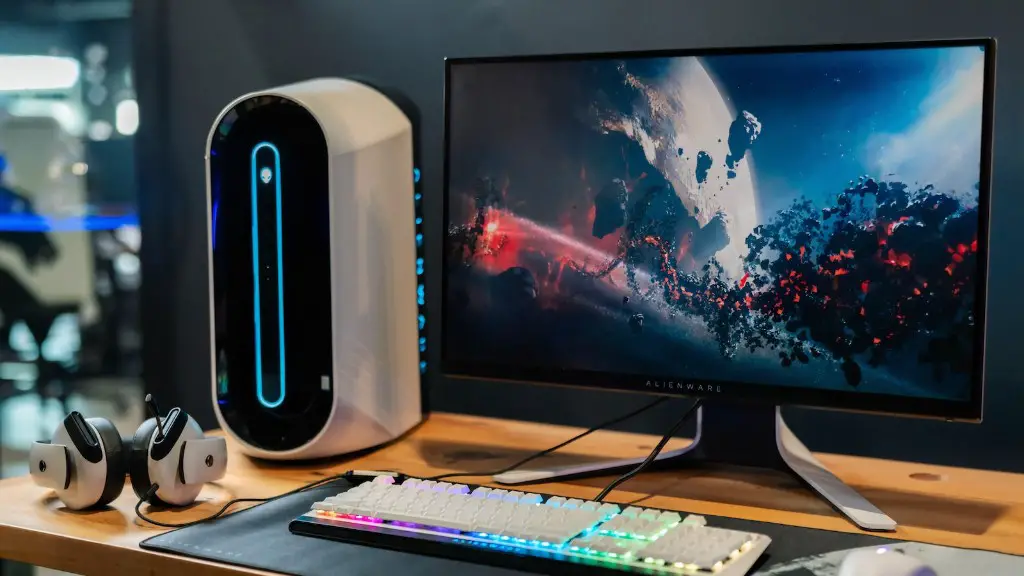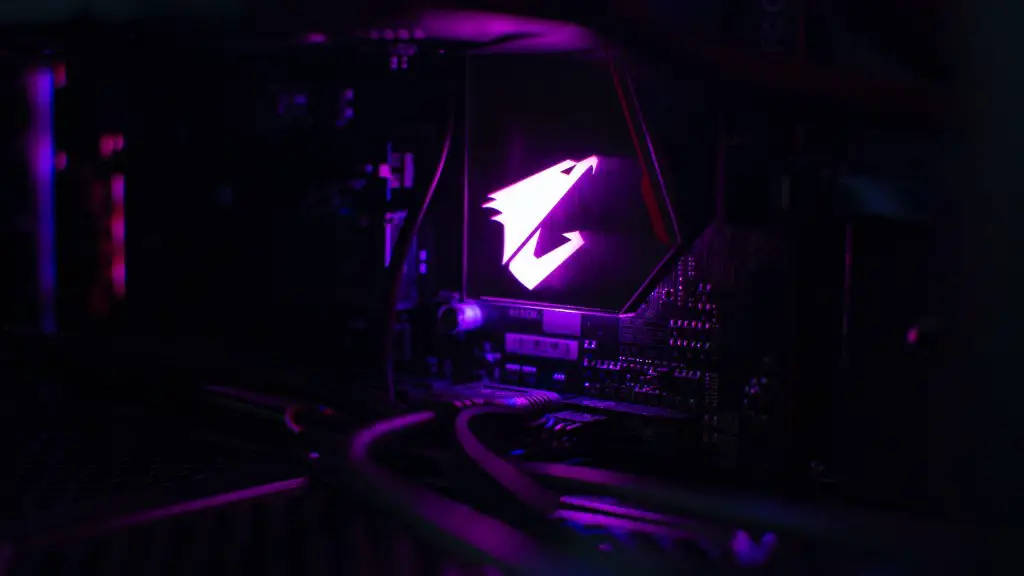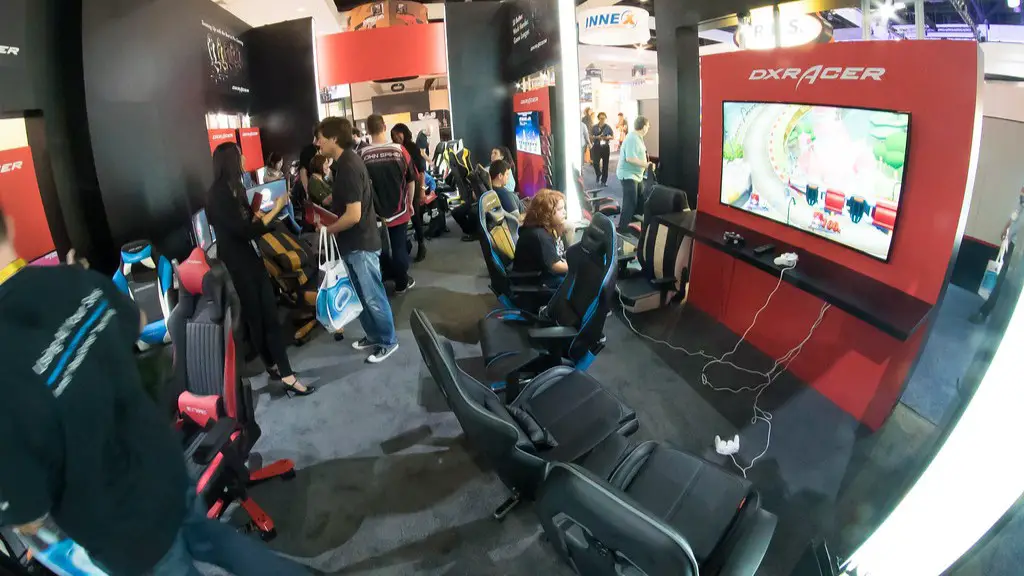When it comes to the average FPS for gaming PCs, there’s no one-size-fits-all answer. It depends on a range of factors such as the type of games being played, the hardware configuration, and the game settings. Nevertheless, the most popular gaming PCs deliver an average framerate above 30FPS for most modern games, with some going up to 60FPS or even higher.
A high-end gaming PC typically has a stronger CPU, more RAM, and faster GPUs than the average gaming PC, allowing it to run more demanding games and deliver higher framerates. At lower settings, gaming PCs can achieve higher FPS, while higher settings usually cause the frame rate to drop. Typically, a powerful gaming PC should be able to deliver at least 30FPS on the lowest settings, and up to 60FPS on medium settings.
There’s a lot that goes into determining the average FPS for a gaming PC. CPU, GPU, RAM and the game’s graphical settings all play a role. The type of game also matters, as certain genres are generally more intensive than others. Even two gaming PCs with similar specs may render different framerates because of differing software setups.
Each game requires a certain blend of CPU and GPU performance to run smoothly. For instance, an FPS or racing game may require higher GPU performance for smoother visuals and better textures, while a strategy game might place a heavier emphasis on the CPU performance.
Graphics cards are particularly important, as they are responsible for powering most game visuals. A powerful graphics card will deliver much better framerates than a budget option. Higher-end cards, such as Nvidia’s RTX 2080 Ti, usually deliver smooth framerates in most games at high settings, while more differentiated cards like the RTX 2060 Super offer a good balance between performance and affordability.
Finally, game settings also play a major role in determining the average FPS for a gaming PC. Generally, higher graphics settings will result in a lower framerate, while lower graphics settings will result in higher framerates. Users should experiment with different settings to discover a good balance between visuals and performance.
What CPU Is Needed for Consistent High FPS?
To get the most out of high FPS gaming, a powerful CPU is needed. High-end CPUs such as the Ryzen 9 3900X or Intel Core i9-9900K are capable of powering demanding PC games, and can hit up to 60 to 120 FPS even on the highest graphics settings. Mid-range processors such as the Intel Core i7-9700F or the AMD Ryzen 7 3800X can still offer good performance at reasonable settings.
The CPU typically plays the biggest role in determining the overall performance of the gaming PC. Depending on the games being played, players may need to adjust their CPU to maximize the framerate. Intel processors tend to perform better in single-threaded games, while AMD chips are great for multi-threaded games.
In general, the higher the processor’s core and thread count, the better its performance in games will be. However, the CPU isn’t the only factor that affects frame rate. Having an adequate cooling system is also important, as this prevents the processor from throttling down its performance due to heat.
Similarly, the amount of RAM present in the PC also affects performance. Having more RAM does not necessarily improve the frame rate, but it does make the game run smoother. For competitive gaming, 16GB of RAM is recommended, though 8GB is still enough for most HD gaming.
Finally, having a good storage drive is important. Look for an SSD drive as they are better for gaming due to their faster read times. HDD drives can still work, though they may lead to longer loading times in games.
What are the Best GPUs for Extreme Performance?
Getting the best GPU is important if you are aiming to achieve extreme performance in your games. High-end GPUs such as the Nvidia RTX 2080Ti or AMD RX Vega 64 are capable of powering the most demanding games on the highest graphical settings and still delivering decent framerates. However, these cards coem with hefty price tags and are out of reach for many gamers.
Mid-range GPUs such as the RTX 2060 Super or the AMD RX 5700 XT offer the sweet spot between performance and affordability. With these cards, gamers can still hit up to 60-80 FPS in popular games like Overwatch and CS:GO on high settings. Budget cards like the GTX 1660 Super or the Radeon RX 5500 XT are also decent for gaming, but they may not hit the same frame rates as higher-end GPUs.
Graphics cards also require a lot of power, however. A powerful PSU is important for ensuring that all the components get sufficient power and that the PC is stable. Look for a PSU with at least 80+ gold certification, as these are the most efficient, and are designed to keep your system running at peak performance.
Overclocking can also boost FPS in games. With the right settings, users can easily get an extra 5-10% increase in performance. However, users should bear in mind that this can void the warranty and might even damage their PC. Before overclocking, consider consulting a professional to ensure the best possible results.
What to Consider When Choosing a Monitor for High FPS?
Getting a good monitor is also important to make the most out of high FPS gaming. Look for a monitor with a high refresh rate and a low response time. Monitors with a refresh rate of 144hz or higher offer silky smooth visuals and low input lag. Similarly, a low response time will result in no motion blur, ensuring clear visuals even at fast framerates.
For the best experience, look for a monitor with FreeSync or G-Sync support. These technologies reduce screen tearing, which can occur when the monitor’s refresh rate and the game’s framerate don’t match. These technologies also help prevent stuttering and other issues.
Finally, consider the resolution of the monitor. Higher resolutions offer clearer visuals and a more immersive experience, but they can also significantly reduce the framerate. For a good balance of performance and visuals, aim for a monitor that offers at least 1080p resolution.
Are High FPS Necessary for Gaming?
The purpose of having a powerful gaming PC is to enjoy the games in the best possible visuals and performance. High FPS can make games feel smoother, and some competitive games may require it for competitive play. However, having higher FPS doesn’t necessarily make the games better.
Different gamers have different preferences. Some prefer low settings with higher framerates, while others prefer to max out the settings even if it means sacrificing some performance. Ultimately, the game has to be enjoyable regardless of the framerate, so it’s important to find a balance between visuals and performance.
Another factor to consider is that many games run perfectly well at lower settings and FPS. Some older titles may require a more powerful PC to run at high settings, while newer games may run perfectly fine even at lower settings. If you’re trying to maximize framerates on a certain game, it’s best to double-check the requirements to ensure you meet them.
Are High FPS Games Harder to Run than Low FPS Games?
As a general rule, the more demanding a game is, the higher the framerate it requires. This is why some games run better than others on certain systems, even ones with similar specs. As such, high FPS games tend to require more powerful hardware than low FPS games.
This is why higher settings usually lead to a lower framerate. The game is rendering more effects and textures, causing the system to require more resources. Ultimately, the game should run as smoothly as possible while still delivering the desired visual experience.
That said, some games are designed to be more demanding and require more powerful hardware. For instance, an RPG may require more nuanced visuals, while a racing game will be more dependent on physics calculations. Each genre and game has its own set of requirements, so it’s important to check the game’s specs before attempting to maximize performance.
Conclusion
The average FPS for gaming PCs depends on a range of factors such as the hardware configuration, the game settings, and the type of game being played. Generally, higher-end gaming PCs can deliver framerates of up to 60FPS on medium settings, while a good mid-range PC should give 30FPS or higher. A powerful CPU, a good GPU, and an adequate cooling system are essential for achieving good performance.
In addition, players should consider their monitor’s refresh rate, response time, and resolution. Above all else, the game should be enjoyable regardless of the framerate. Some games may require more powerful hardware to achieve the desired performance, while others will run smoothly even at lower settings.



